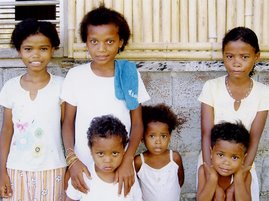The Avian Flu article presented for the case discussion presented some eye-opening worldwide implications of a potential pandemic and some recommendations which might help alleviate its impact on healthy and functioning societies all around. To piggyback on this issue, according to the WHO, we are currently at level 3 (no or very limited human-to-human transmission) of the global influenza preparedness plan.
As if this intermediate level of preparedness isn't already a cause for concern, the WHO has recently alerted the public that a H5N1 genetic mutation has been observed in Egypt in two related individuals. Both infected individuals were admitted to a hospital in mid-December of 2006, and were prescribed 2 tablets per day of Oseltamivir - an antiviral drug that is used in the treatment and prophylaxis of both Influenzavirus A and Influenzavirus B. However, laboratory testing has revealed moderately reduced susceptibility to Oseltamivir in both patients due to the genetically mutating virus. The infected pair died before even seeing the new year.
The WHO has not changed their antiviral treatment reommendations for individuals infected with H5N1, nor have they changed the level of preparedness. Moreover, these mutations show no indication of human-to-human transmissibility yet. However, this is how a pandemic starts - transmission from an animal vector to humans, antiviral resistance due to viral mutations, and finally, transmission between humans. It's rather unsettling to hear that the WHO has tackled awareness on such a small scale. The preliminary stages of an upcoming pandemic are clearly revealing themselves at an increasing rate. Why have they not taken further steps to alert everyone so that they may increase their level of preparedness or initiate a plan of action if one has not already been implemented? As Larry Brilliant said in his lecture on epidemics and pandemics, the key to eradicating disease and preventing potential pandemics is "Early detection [and] early response." The WHO has already detected the warning signs prior to an outbreak; what they need to do now is take more aggressive measures to prevent a future disaster from unfolding.
Link: http://www.who.int/csr/don/2007_01_18/en/index.html
Subscribe to:
Post Comments (Atom)






1 comment:
Its scary to imagine that this dangerous virus is on the brink of unleashing globally and our drugs are mediocre at best. The WHO may not have the best plan in place, but they at least have a series of steps they would take in the event of a pandemic. While it may not be enough, knowing what our obstacles are will hopefully help us to improve part of the plan.
Post a Comment